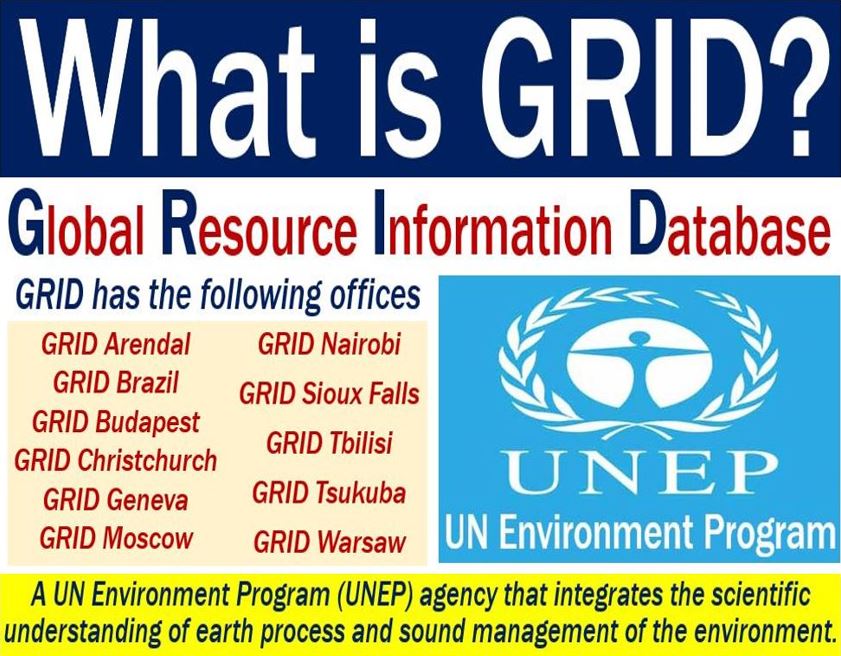What is GRID (Global Resource Information Database)?
The Global Resource Information Database or GRID is part of UNEP. UNEP stands for the United Nations Environment Program. UNEP is the leading global environmental authority. It sets the global environmental agenda and promotes coherent implementation of sustainable development.
The Global Resource Information Database aims to integrate the scientific understanding of earth processes. It also strives to optimize the management of the environment at global, regional, and national levels.
It has two nodes, i.e., main centers, in Nairobi, Kenya, and Geneva, Switzerland. The Organization also has sub-nodes in Brazil, Budapest, Norway, Russia, USA, and Poland.
According to eldis.org, the mission of the Global Resource Information Database is:
“To provide timely and reliable geo-referenced environmental information and access to a unique international data service to help address environmental issues at global, regional and national levels.”
GRID – environmental data sets
The Global Resource Information Database has an extensive archive of environmental data sets. A ‘data set’ or ‘dataset’ is a collection of data.
International as well as national clients can access the archive through a system of Cooperating Centers. The Centers make special types of environmental data more readily accessible.

Each Center offers a slightly different service. The information services include:
- Environmental Datasets which GRID has been building up since 1985. Additionally, the Global Resource Information Database has access to other agencies’ data.
- Soon, all the data will be available online. In fact, the American site now has a demonstration FTP facility.
- GRID-Geneva has a WebSearch facility for data that the organization does not hold directly. It can, on request, search for online datasets.
- There is a network of Gopher Sites with information on the program and available services. According to eldis.org, the Nairobi node has the most extensive background information.
- There is also a Library of Documentation on GIS/IP applications and case studies. All the documents are available free of charge.
GRID – North America
The North American node of the UNEP agency is in Sioux Falls. Its offices are at the EROS Center of the US Geological Survey in Sioux Falls, South Dakota. EROS stands for Earth Resources Observation and Science.
The Sioux Falls sub-node has been operational since 1991. It functions as a partnership between the USGS and UNEP. USGS stands for the US Geological Survey.
GRID – Europe
The Association for Progressive Communications (APC) says that GRID-Europe has compiled an archive of European, global, and other geospatial databases. Most of the data is in digital format and includes statistical tables, reports, and satellite imagery. The data also includes maps.
GRID-Europe now focuses on providing ‘early warning’ on looming environmental threats and stresses.
It mobilizes environmental data to backstop international action during crises. It also provides value-added information products.
“GRID-Europe also closely monitors developments in Information Technologies and examines their utility to environmental monitoring and policy formulation, and creates client-specific databases and Internet websites.”

